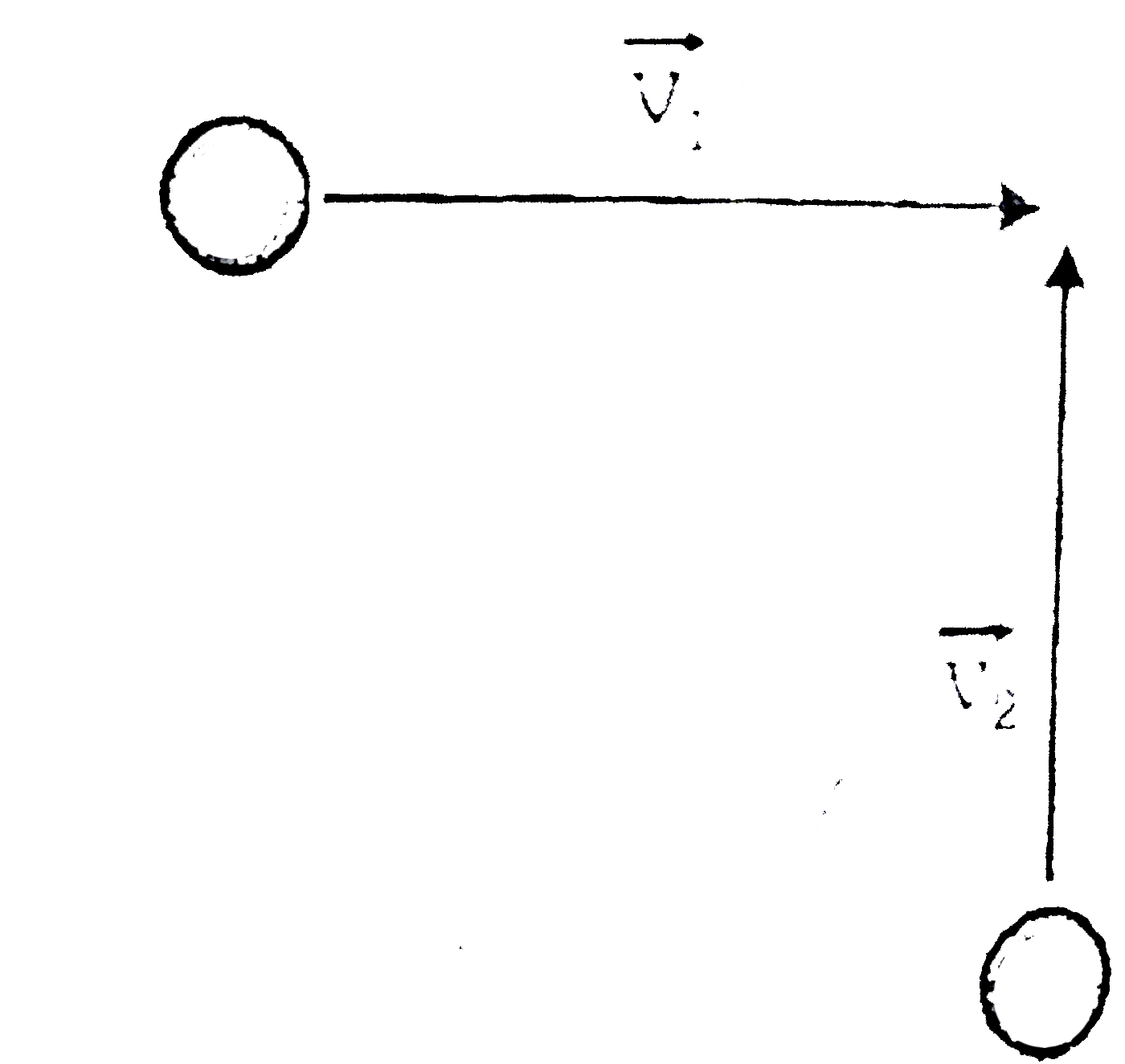Two H atoms in the ground state collide in elastically. The maximum amount by which their combined kinetic energy is reduced is
10.20eV
20.40eV
13.6eV
27.2eV
The correct Answer is:A
To solve the problem of how much the combined kinetic energy of two hydrogen atoms in the ground state is reduced after an inelastic collision, we can follow these steps:
Step 1: Determine the initial total energy of the hydrogen atoms.
Each hydrogen atom in the ground state has an energy of -13.6 eV. Therefore, for two hydrogen atoms:
Initial Total Energy=2×(−13.6eV)=−27.2eV
Step 2: Understand the inelastic collision and the excited state.
In an inelastic collision, one of the hydrogen atoms can be excited to a higher energy level (n=2). The energy of the excited state (n=2) for hydrogen is given by:
En=−13.6eVn2
For n=2:
E2=−13.6eV22=−13.6eV4=−3.4eV
Step 3: Calculate the total energy after the collision.
After the collision, one hydrogen atom is in the excited state (n=2) and the other remains in the ground state (n=1). Therefore, the total energy after the collision is:
Total Energy After Collision=E2+E1=−3.4eV+(−13.6eV)=−17eV
Step 4: Calculate the reduction in kinetic energy.
The reduction in kinetic energy due to the inelastic collision is the difference between the initial total energy and the total energy after the collision:
Reduction in Kinetic Energy=Initial Total Energy−Total Energy After Collision
Substituting the values:
Reduction in Kinetic Energy=(−27.2eV)−(−17eV)=−27.2eV+17eV=−10.2eV
Thus, the maximum amount by which their combined kinetic energy is reduced is:
Reduction in Kinetic Energy=10.2eV
Final Answer:
The maximum amount by which their combined kinetic energy is reduced is 10.2 eV.
---
Each hydrogen atom in the ground state has an energy of -13.6 eV. Therefore, for two hydrogen atoms:
In an inelastic collision, one of the hydrogen atoms can be excited to a higher energy level (n=2). The energy of the excited state (n=2) for hydrogen is given by:
After the collision, one hydrogen atom is in the excited state (n=2) and the other remains in the ground state (n=1). Therefore, the total energy after the collision is:
The reduction in kinetic energy due to the inelastic collision is the difference between the initial total energy and the total energy after the collision:
The maximum amount by which their combined kinetic energy is reduced is 10.2 eV.
Topper's Solved these Questions
- ATOMSBOOK - NCERT EXEMPLAR ENGLISHCHAPTER - ATOMSEXERCISE - Very short Answer type
5 Videos
- ATOMSBOOK - NCERT EXEMPLAR ENGLISHCHAPTER - ATOMSEXERCISE - Short Answer Type
5 Videos
- ALTERNATING CURRENTBOOK - NCERT EXEMPLAR ENGLISHCHAPTER - ALTERNATING CURRENTEXERCISE - Long Answe types Questions
5 Videos
- COMMUNICATION SYSTEMBOOK - NCERT EXEMPLAR ENGLISHCHAPTER - COMMUNICATION SYSTEMEXERCISE - LONG ANSWER TYPE QUESTIONS
5 Videos
Similar Questions
Two H atoms in the ground state collide inelastically. The maximum amount by which their combined kinetic energy is reduced is
View SolutionThe total energy of the electron in the hydrogen atom in the ground state is -13.6 eV. Which of the following is its kinetic energy in the first excited state?
View Solution
Knowledge Check
Two H atoms in the ground state collide inelastically. The maximum amount by which their combined kinetic energy is reduced is
A10.2eVB20.4eVC13.6eVD27.2eV
Two balls of masses m1,m2 and speeds v1 and v2 collide at right angle . The maximum amount of kinetic energy loss due ot inelastic collision is ___.

View SolutionState two factors on which the kinetic energy of a moving body depends.
View SolutionThe energy of the electron in the ground state of hydrogen atom is −13.6eV. Find the kinetic energy of electron in this state.
View SolutionAn electron is at ground state of the H atom. The minimum energy required to excite the H atom into the second excited state is
View SolutionAn electron having energy 20eV collides with a hydrogen atom in the ground state. As a result of the colllision , the atom is excite to a higher energy state and the electron is scattered with reduced velocity. The atom subsequentily returns to its ground state with emission of rediation of wavelength 1.216×10−7m. Find the velocity of the scattered electron.
View SolutionAn electron having energy 20eV collides with a hydrogen atom in the ground state. As a result of the colllision , the atom is excite to a higher energy state and the electron is scattered with reduced velocity. The atom subsequentily returns to its ground state with emission of rediation of wavelength 1.216×10−7m. Find the velocity of the scattered electron.
View SolutionA beam of momechromatic light of wavelength λ ejectes photonelectrons from a cesium (ϕ=1.9eV) these photonelectron are mde to collide with h-atom in ground state . find the maximum value of λ for which (a) hydrogen atoms may be ionised (b) hydrogen may get excited from the ground state to the first excited state and (c ) the excited hydrogen atoms may emit visible light
View Solution
